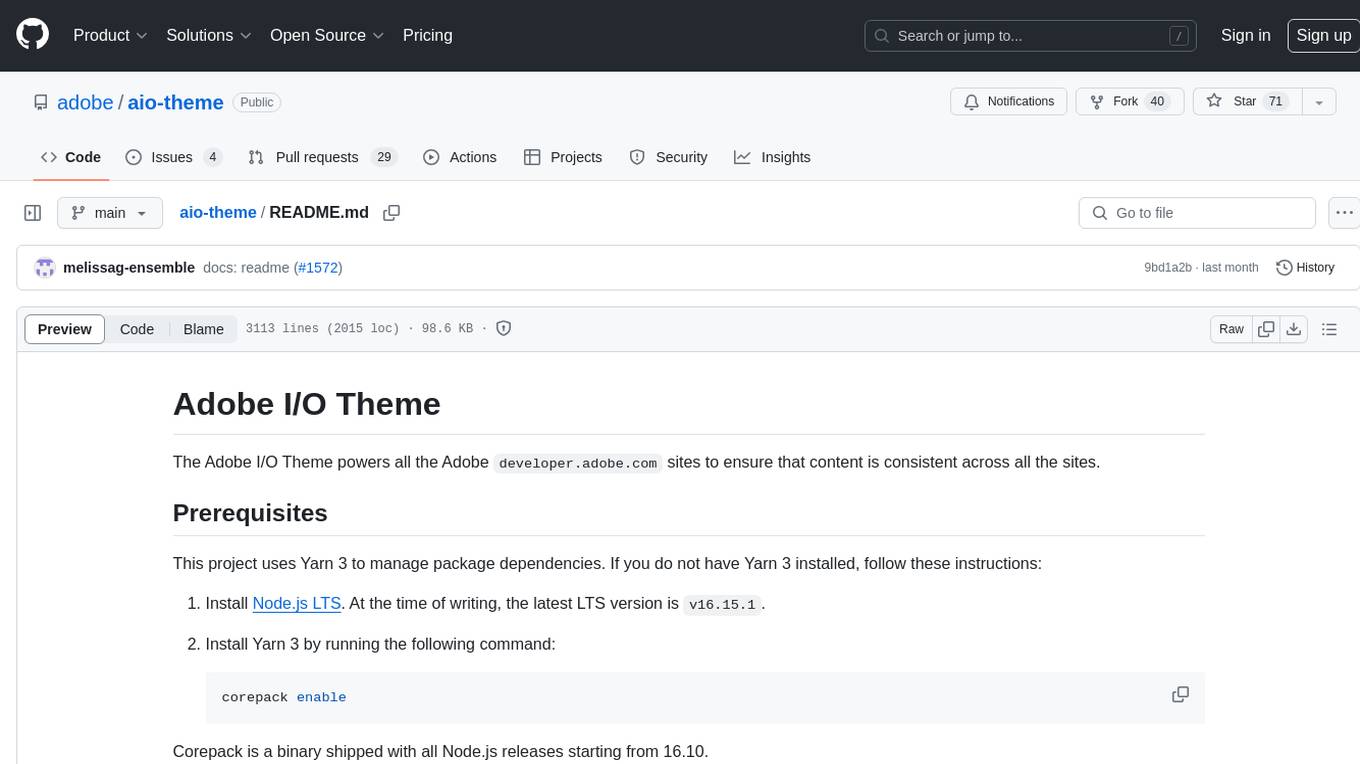
ethereum-etl-airflow
Airflow DAGs for exporting, loading, and parsing the Ethereum blockchain data. How to get any Ethereum smart contract into BigQuery https://towardsdatascience.com/how-to-get-any-ethereum-smart-contract-into-bigquery-in-8-mins-bab5db1fdeee
Stars: 394
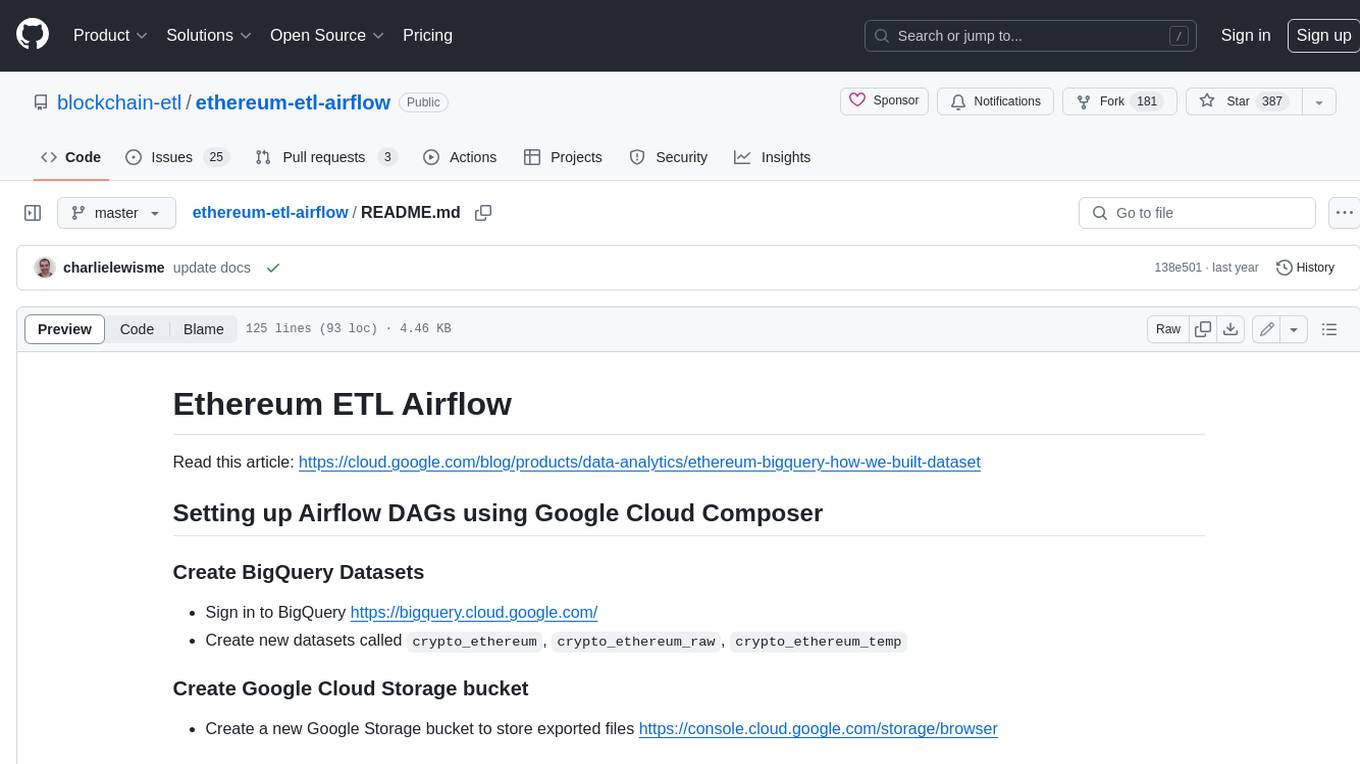
This repository contains Airflow DAGs for extracting, transforming, and loading (ETL) data from the Ethereum blockchain into BigQuery. The DAGs use the Google Cloud Platform (GCP) services, including BigQuery, Cloud Storage, and Cloud Composer, to automate the ETL process. The repository also includes scripts for setting up the GCP environment and running the DAGs locally.
README:
Read this article: https://cloud.google.com/blog/products/data-analytics/ethereum-bigquery-how-we-built-dataset
- direnv
- pyenv
We are using direnv to automatically set up and load the correct python version. We also create a venv in the root folder, that is automatically activated when entering the project folder.
- Sign in to BigQuery https://bigquery.cloud.google.com/
- Create new datasets called
crypto_ethereum,crypto_ethereum_raw,crypto_ethereum_temp
- Create a new Google Storage bucket to store exported files https://console.cloud.google.com/storage/browser
Create a new Cloud Composer environment:
export ENVIRONMENT_NAME=ethereum-etl-0
AIRFLOW_CONFIGS_ARR=(
"celery-worker_concurrency=8"
"scheduler-dag_dir_list_interval=300"
"scheduler-min_file_process_interval=120"
)
export AIRFLOW_CONFIGS=$(IFS=, ; echo "${AIRFLOW_CONFIGS_ARR[*]}")
gcloud composer environments create \
$ENVIRONMENT_NAME \
--location=us-central1 \
--image-version=composer-2.1.14-airflow-2.5.1 \
--environment-size=medium \
--scheduler-cpu=2 \
--scheduler-memory=13 \
--scheduler-storage=1 \
--scheduler-count=1 \
--web-server-cpu=1 \
--web-server-memory=2 \
--web-server-storage=512MB \
--worker-cpu=2 \
--worker-memory=13 \
--worker-storage=10 \
--min-workers=1 \
--max-workers=8 \
--airflow-configs=$AIRFLOW_CONFIGS
gcloud composer environments update \
$ENVIRONMENT_NAME \
--location=us-central1 \
--update-pypi-packages-from-file=requirements_airflow.txtCreate variables in Airflow (Admin > Variables in the UI):
| Variable | Description |
|---|---|
| ethereum_output_bucket | GCS bucket to store exported files |
| ethereum_provider_uris | Comma separated URIs of Ethereum nodes |
| ethereum_destination_dataset_project_id | Project ID of BigQuery datasets |
| notification_emails | email for notifications |
Check other variables in dags/ethereumetl_airflow/variables.py.
Suggested package requirements for Composer are stored in requirements_airflow.txt.
You can update the Composer environment using the following script:
ENVIRONMENT_NAME="ethereum-etl-0"
LOCAL_REQUIREMENTS_PATH="$(mktemp)"
# grep pattern removes comments and whitespace:
cat "./requirements_airflow.txt" | grep -o '^[^#| ]*' > "$LOCAL_REQUIREMENTS_PATH"
gcloud composer environments update \
"$ENVIRONMENT_NAME" \
--location="us-central1" \
--update-pypi-packages-from-file="$LOCAL_REQUIREMENTS_PATH"Note: Composer can be very pedantic about conflicts in additional packages. You may have to fix dependency conflicts where you had no issues testing locally (when updating dependencies, Composer does something "cleverer" than just pip install -r requirements.txt). This is why eth-hash is currently pinned in requirements_airflow.txt. Typically we have found that pinning eth-hash and/or eth-rlp may make things work, though Your Mileage May Vary.
See this issue for further ideas on how to unblock problems you may encounter.
> ./upload_dags.sh <airflow_bucket>pip install \
-r requirements_test.txt \
-r requirements_local.txt \
-r requirements_airflow.txt
pytest -vv -sA docker compose definition has been provided to easily spin up a local Airflow instance.
To build the required image:
docker compose buildTo start Airflow:
docker compose up airflowThe instance requires the CLOUDSDK_CORE_PROJECT environment variable to be set in most cases. Airflow Variables can be defined in variables.json.
Read this article: https://medium.com/@medvedev1088/query-ens-and-0x-events-with-sql-in-google-bigquery-4d197206e644
A utility script for debugging and verifying contract parsing in Ethereum data processing pipelines is available. You can simply run
python3 generate_parse_sql.py <path_to_table_definition_file> <date>
This will output some example SQL that can be used to debug if the generated json files from the contract parser are correct.
NOTE: certain files may not have the contract_address field specified as a valid address ERC20Pool_event_TransferLP but use a select statement on another table instead. For these you can simply pass the contract address yourself like below:
python3 generate_parse_sql.py <path_to_table_definition_file> <date> --contract_address <contract_address>
You can follow the instructions here for Polygon DAGs https://github.com/blockchain-etl/polygon-etl. The architecture
there is very similar to Ethereum so in most case substituting polygon for ethereum will work. Contributions
to this README file for porting documentation from Polygon to Ethereum are welcome.
For Tasks:
Click tags to check more tools for each tasksFor Jobs:
Alternative AI tools for ethereum-etl-airflow
Similar Open Source Tools

ethereum-etl-airflow
This repository contains Airflow DAGs for extracting, transforming, and loading (ETL) data from the Ethereum blockchain into BigQuery. The DAGs use the Google Cloud Platform (GCP) services, including BigQuery, Cloud Storage, and Cloud Composer, to automate the ETL process. The repository also includes scripts for setting up the GCP environment and running the DAGs locally.
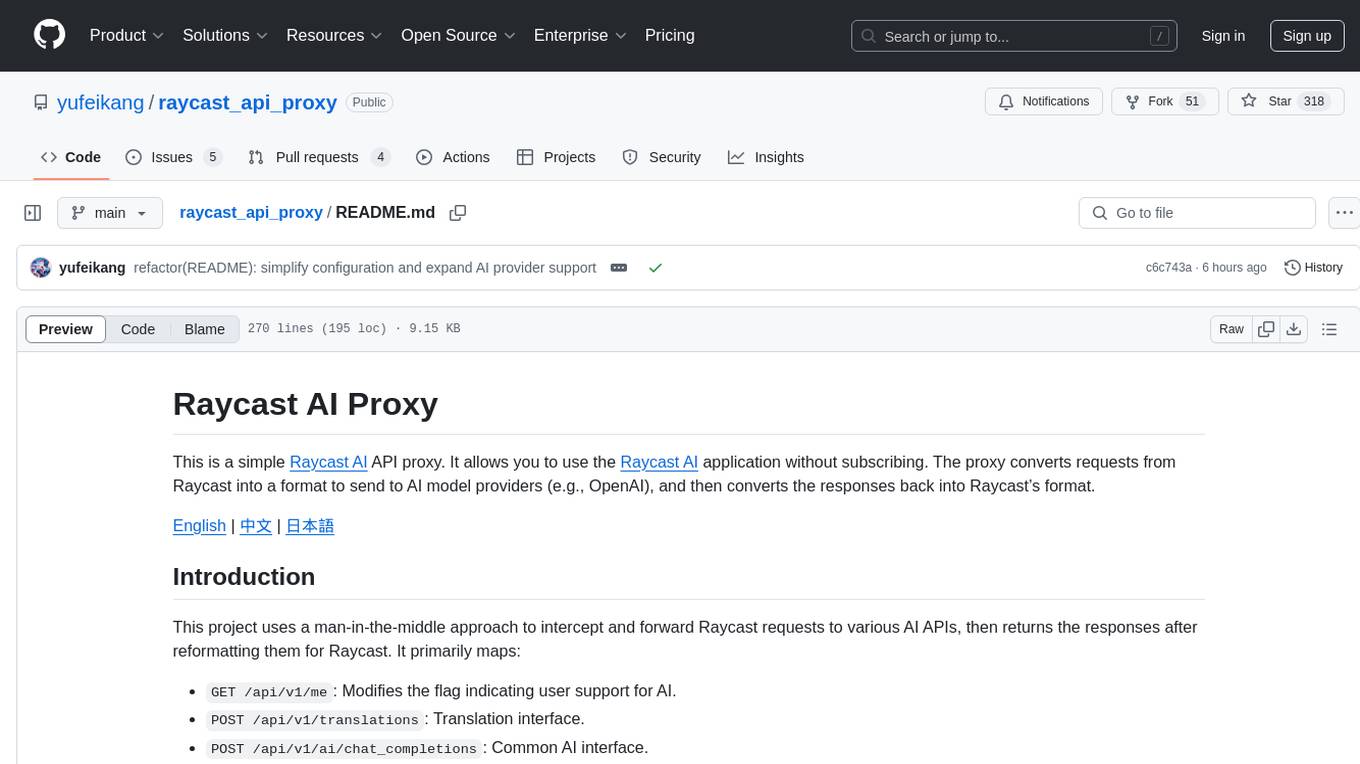
raycast_api_proxy
The Raycast AI Proxy is a tool that acts as a proxy for the Raycast AI application, allowing users to utilize the application without subscribing. It intercepts and forwards Raycast requests to various AI APIs, then reformats the responses for Raycast. The tool supports multiple AI providers and allows for custom model configurations. Users can generate self-signed certificates, add them to the system keychain, and modify DNS settings to redirect requests to the proxy. The tool is designed to work with providers like OpenAI, Azure OpenAI, Google, and more, enabling tasks such as AI chat completions, translations, and image generation.
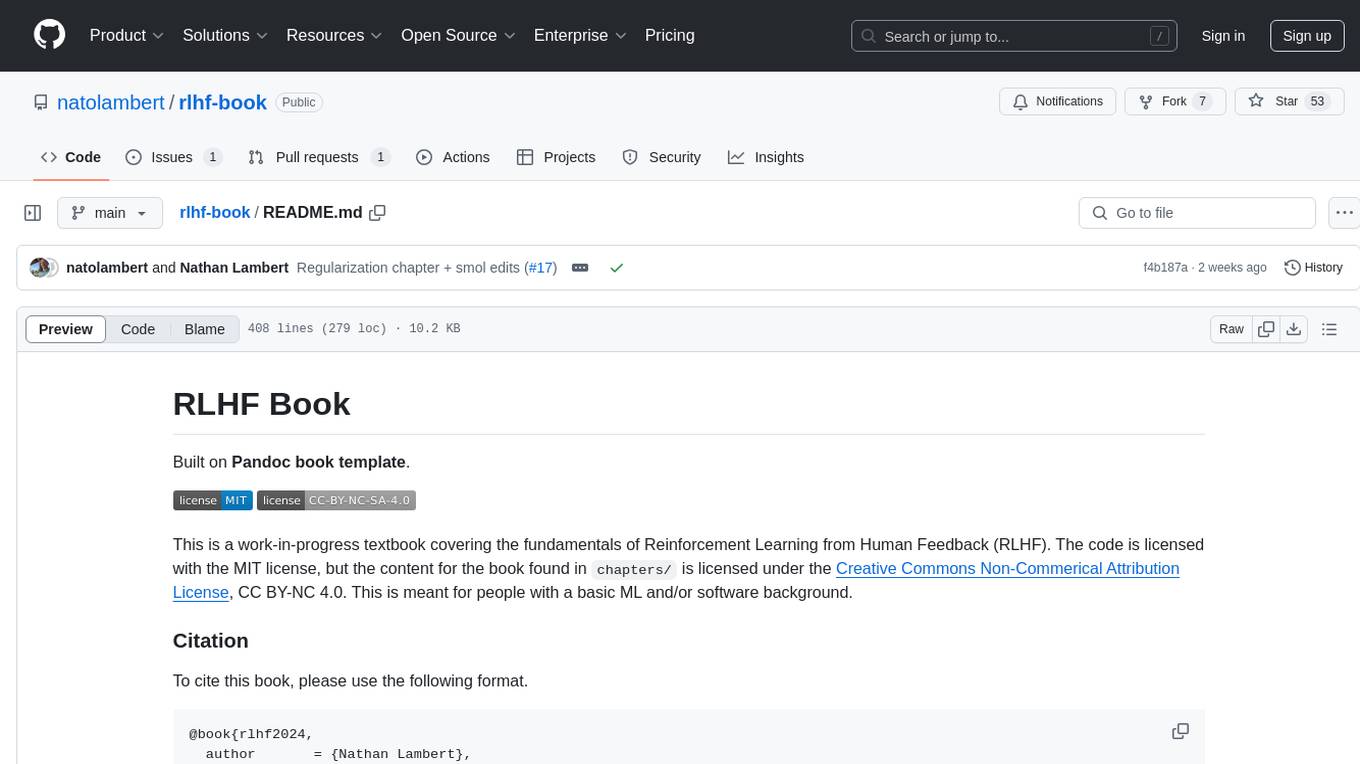
rlhf-book
RLHF Book is a work-in-progress textbook covering the fundamentals of Reinforcement Learning from Human Feedback (RLHF). It is built on the Pandoc book template and is meant for people with a basic ML and/or software background. The content for the book is licensed under the Creative Commons Non-Commercial Attribution License, CC BY-NC 4.0. The repository contains a simple template for building Pandoc documents, allowing users to compile markdown files into readable files such as PDF, EPUB, and HTML.
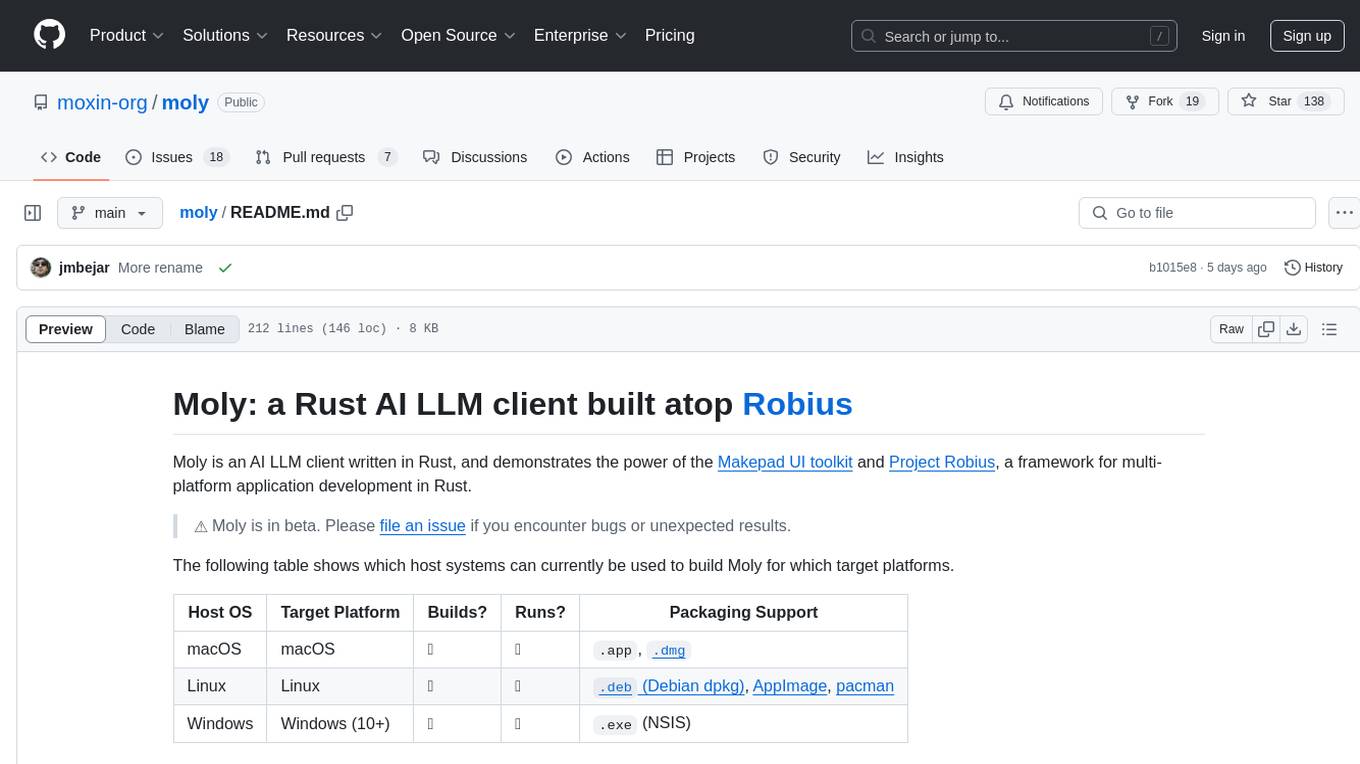
moly
Moly is an AI LLM client written in Rust, showcasing the capabilities of the Makepad UI toolkit and Project Robius, a framework for multi-platform application development in Rust. It is currently in beta, allowing users to build and run Moly on macOS, Linux, and Windows. The tool provides packaging support for different platforms, such as `.app`, `.dmg`, `.deb`, AppImage, pacman, and `.exe` (NSIS). Users can easily set up WasmEdge using `moly-runner` and leverage `cargo` commands to build and run Moly. Additionally, Moly offers pre-built releases for download and supports packaging for distribution on Linux, Windows, and macOS.
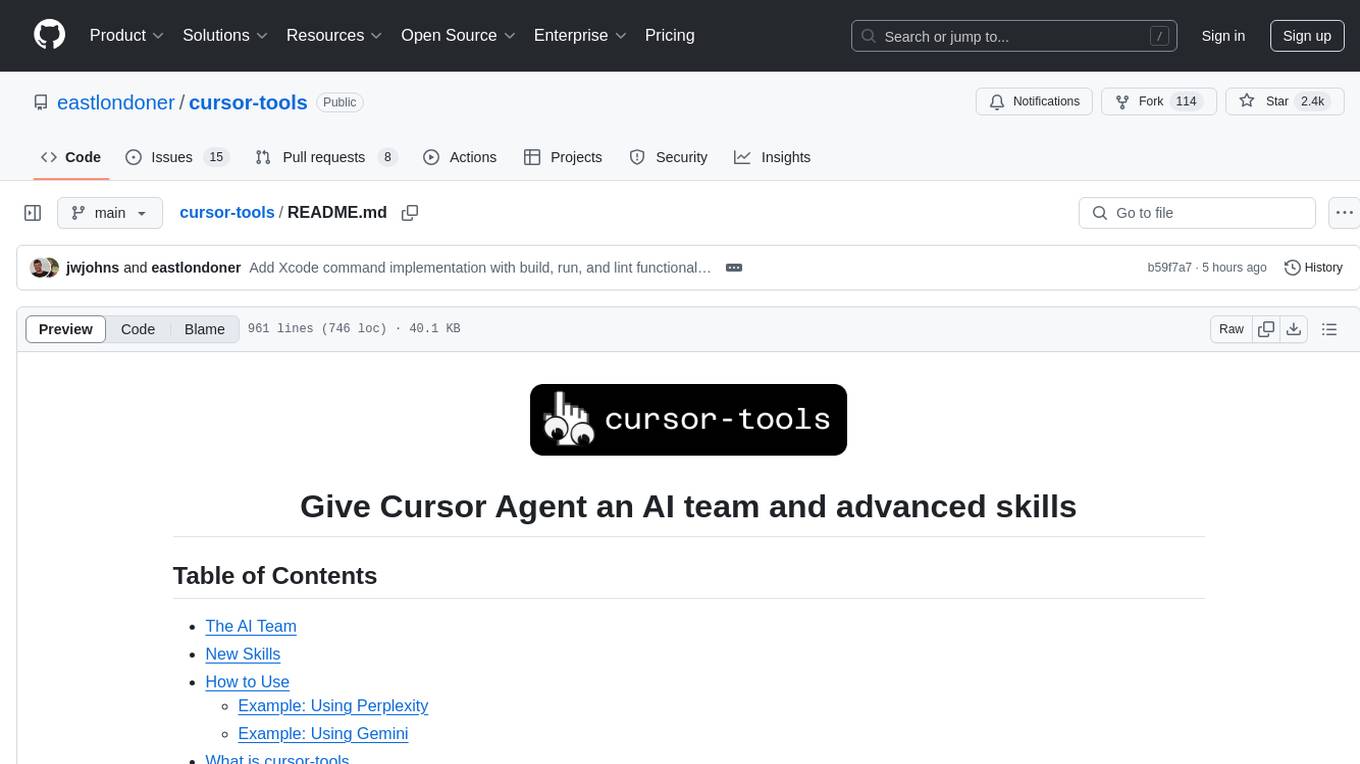
cursor-tools
cursor-tools is a CLI tool designed to enhance AI agents with advanced skills, such as web search, repository context, documentation generation, GitHub integration, Xcode tools, and browser automation. It provides features like Perplexity for web search, Gemini 2.0 for codebase context, and Stagehand for browser operations. The tool requires API keys for Perplexity AI and Google Gemini, and supports global installation for system-wide access. It offers various commands for different tasks and integrates with Cursor Composer for AI agent usage.
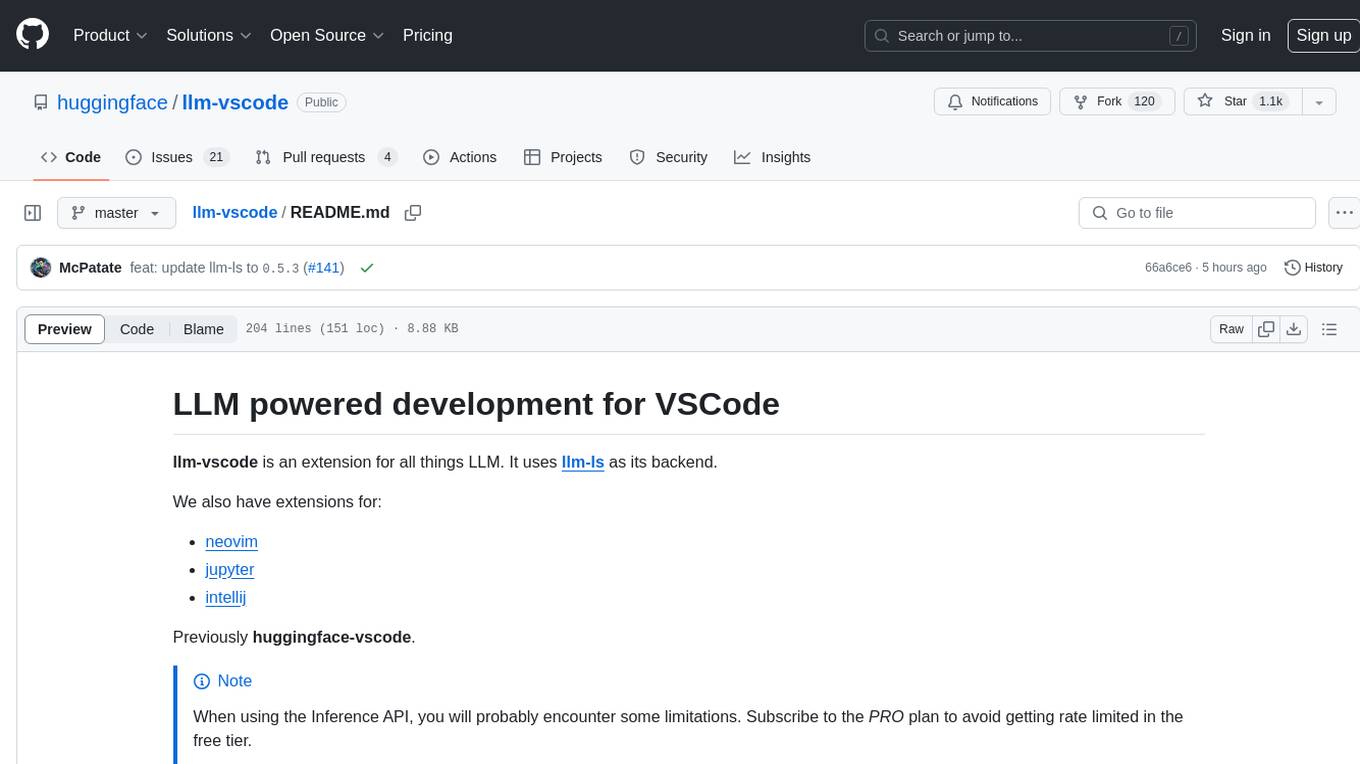
llm-vscode
llm-vscode is an extension designed for all things LLM, utilizing llm-ls as its backend. It offers features such as code completion with 'ghost-text' suggestions, the ability to choose models for code generation via HTTP requests, ensuring prompt size fits within the context window, and code attribution checks. Users can configure the backend, suggestion behavior, keybindings, llm-ls settings, and tokenization options. Additionally, the extension supports testing models like Code Llama 13B, Phind/Phind-CodeLlama-34B-v2, and WizardLM/WizardCoder-Python-34B-V1.0. Development involves cloning llm-ls, building it, and setting up the llm-vscode extension for use.
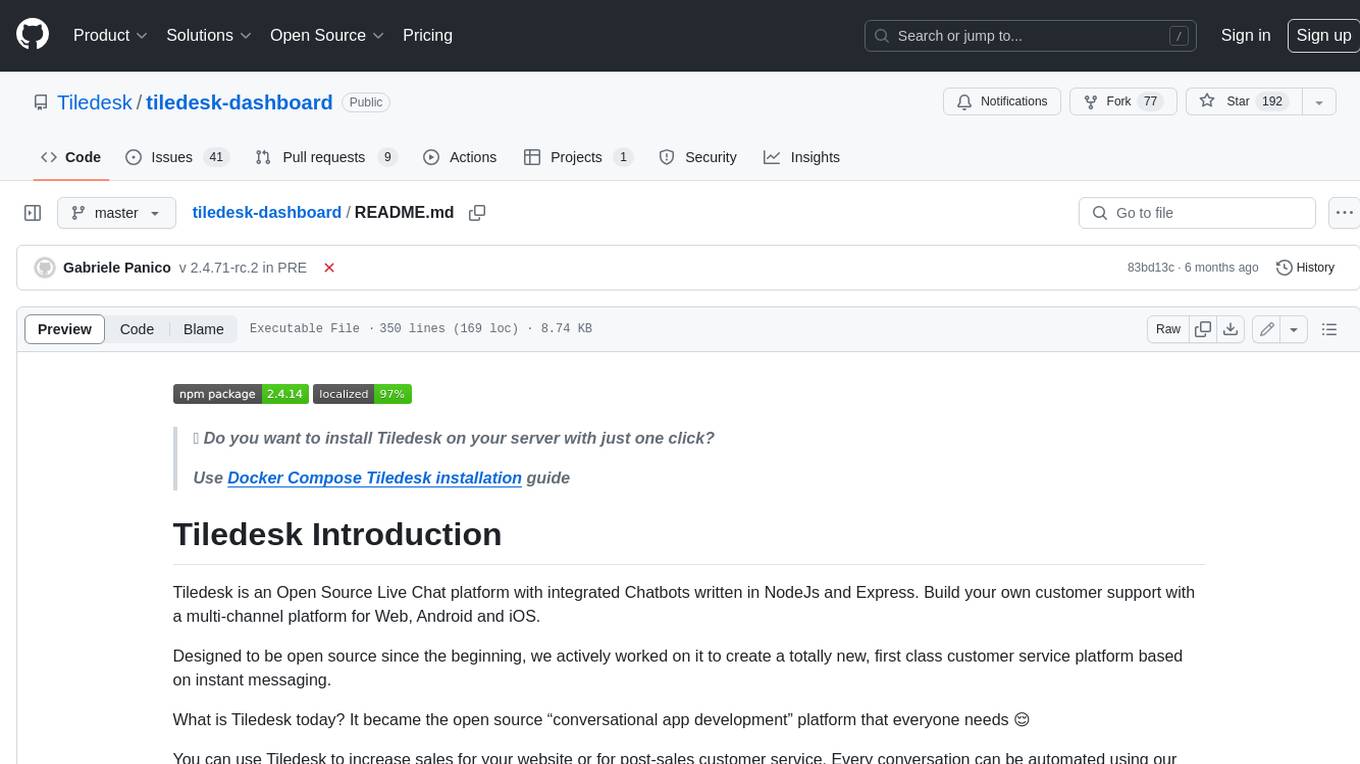
tiledesk-dashboard
Tiledesk is an open-source live chat platform with integrated chatbots written in Node.js and Express. It is designed to be a multi-channel platform for web, Android, and iOS, and it can be used to increase sales or provide post-sales customer service. Tiledesk's chatbot technology allows for automation of conversations, and it also provides APIs and webhooks for connecting external applications. Additionally, it offers a marketplace for apps and features such as CRM, ticketing, and data export.
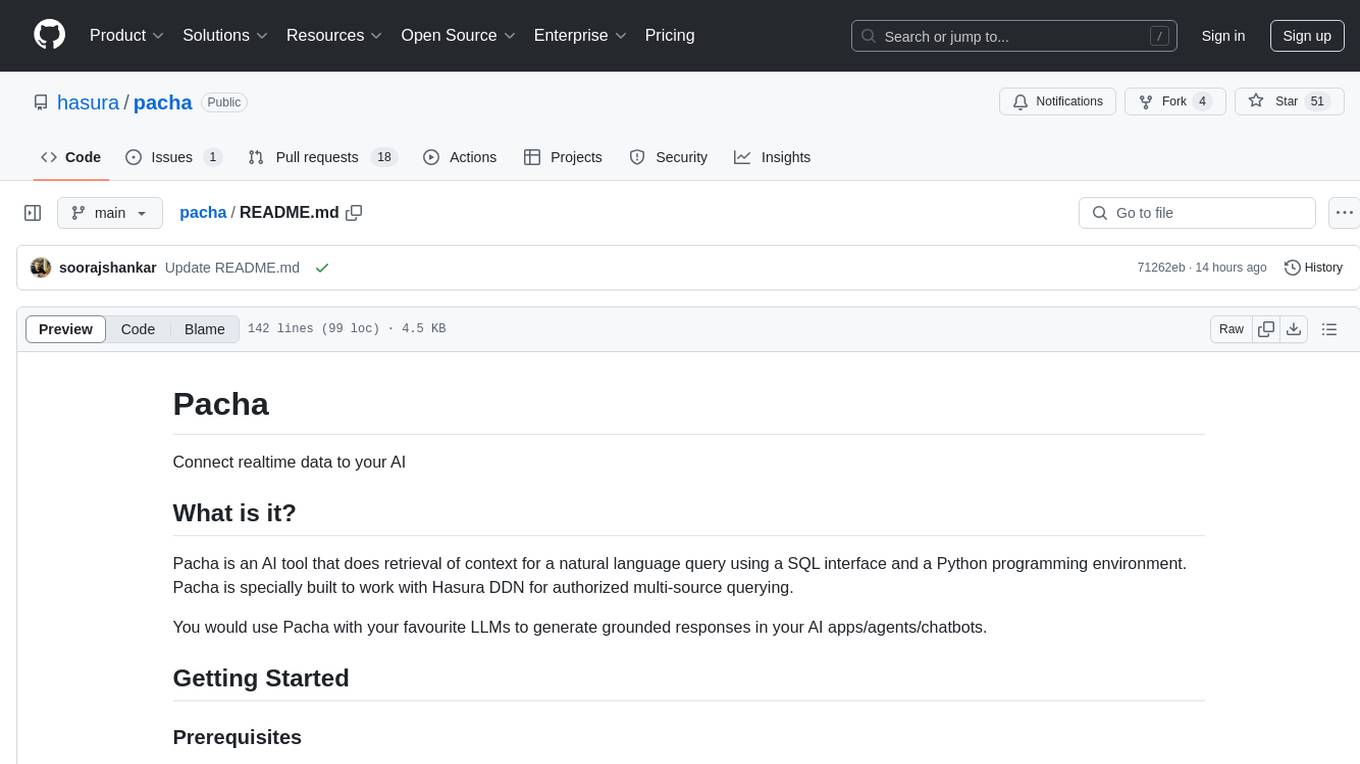
pacha
Pacha is an AI tool designed for retrieving context for natural language queries using a SQL interface and Python programming environment. It is optimized for working with Hasura DDN for multi-source querying. Pacha is used in conjunction with language models to produce informed responses in AI applications, agents, and chatbots.
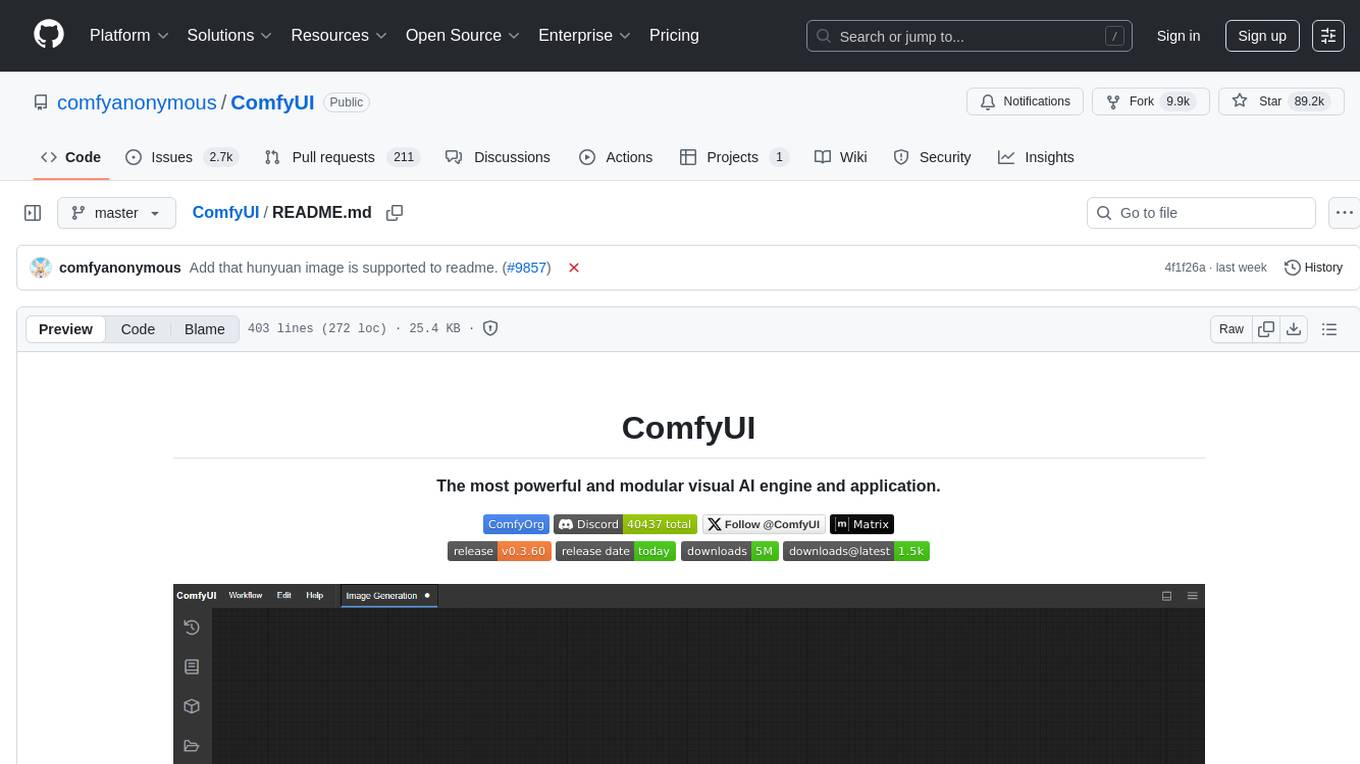
ComfyUI
ComfyUI is a powerful and modular visual AI engine and application that allows users to design and execute advanced stable diffusion pipelines using a graph/nodes/flowchart based interface. It provides a user-friendly environment for creating complex Stable Diffusion workflows without the need for coding. ComfyUI supports various models for image editing, video processing, audio manipulation, 3D modeling, and more. It offers features like smart memory management, support for different GPU types, loading and saving workflows as JSON files, and offline functionality. Users can also use API nodes to access paid models from external providers through the online Comfy API.
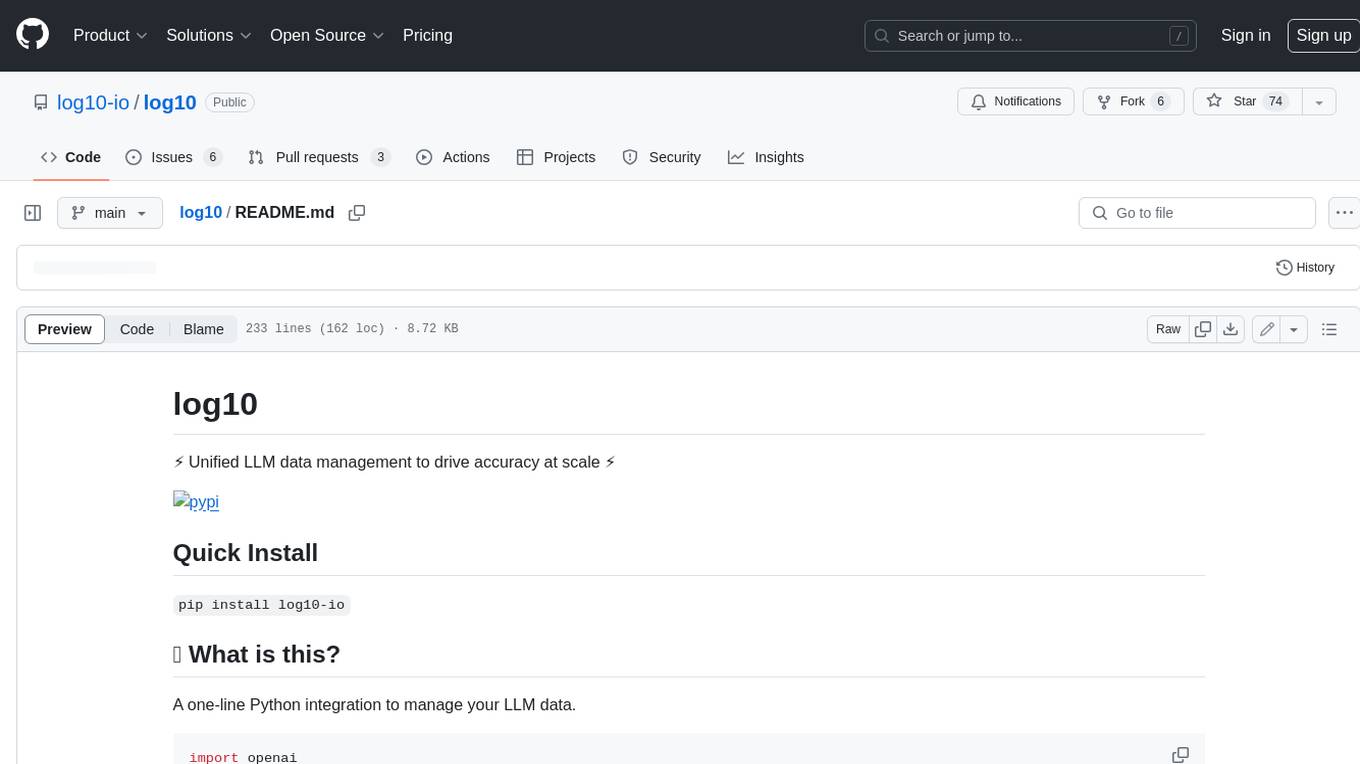
log10
Log10 is a one-line Python integration to manage your LLM data. It helps you log both closed and open-source LLM calls, compare and identify the best models and prompts, store feedback for fine-tuning, collect performance metrics such as latency and usage, and perform analytics and monitor compliance for LLM powered applications. Log10 offers various integration methods, including a python LLM library wrapper, the Log10 LLM abstraction, and callbacks, to facilitate its use in both existing production environments and new projects. Pick the one that works best for you. Log10 also provides a copilot that can help you with suggestions on how to optimize your prompt, and a feedback feature that allows you to add feedback to your completions. Additionally, Log10 provides prompt provenance, session tracking and call stack functionality to help debug prompt chains. With Log10, you can use your data and feedback from users to fine-tune custom models with RLHF, and build and deploy more reliable, accurate and efficient self-hosted models. Log10 also supports collaboration, allowing you to create flexible groups to share and collaborate over all of the above features.
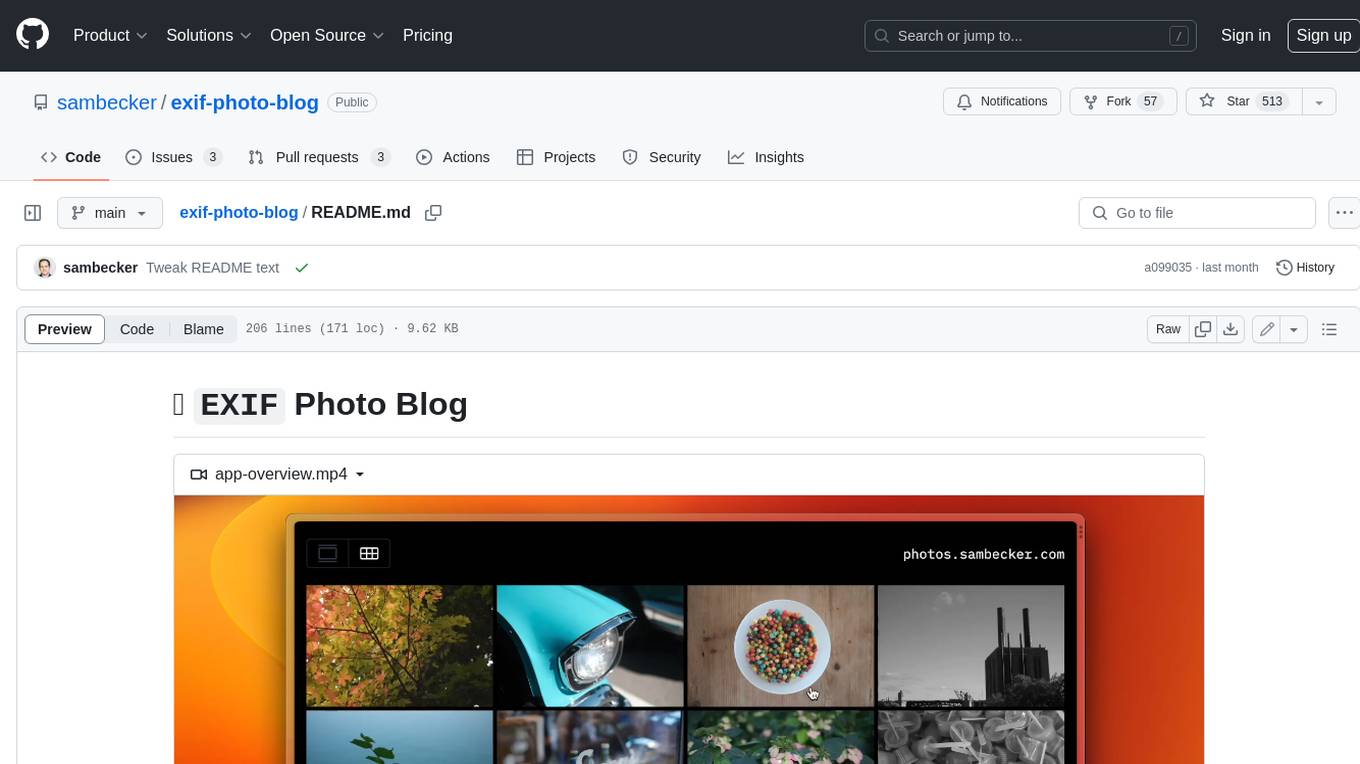
exif-photo-blog
EXIF Photo Blog is a full-stack photo blog application built with Next.js, Vercel, and Postgres. It features built-in authentication, photo upload with EXIF extraction, photo organization by tag, infinite scroll, light/dark mode, automatic OG image generation, a CMD-K menu with photo search, experimental support for AI-generated descriptions, and support for Fujifilm simulations. The application is easy to deploy to Vercel with just a few clicks and can be customized with a variety of environment variables.
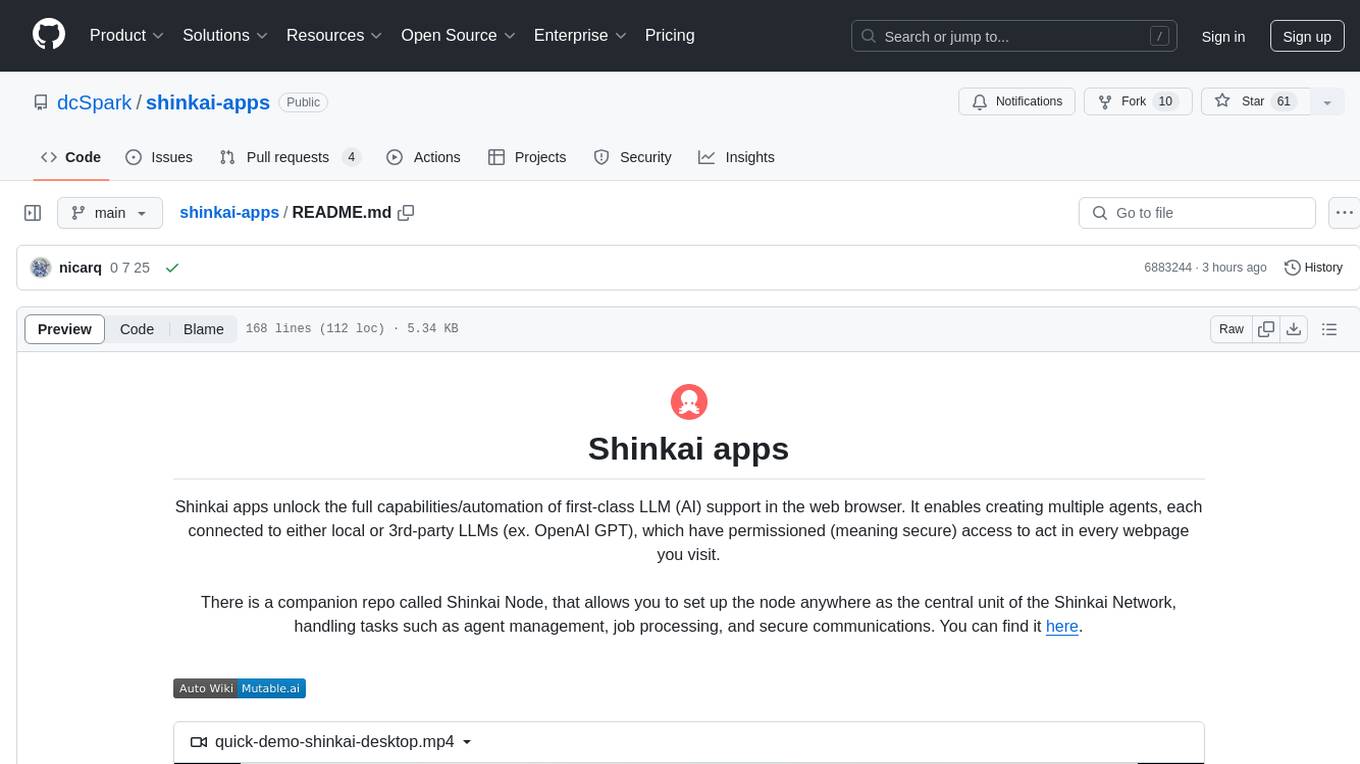
shinkai-apps
Shinkai apps unlock the full capabilities/automation of first-class LLM (AI) support in the web browser. It enables creating multiple agents, each connected to either local or 3rd-party LLMs (ex. OpenAI GPT), which have permissioned (meaning secure) access to act in every webpage you visit. There is a companion repo called Shinkai Node, that allows you to set up the node anywhere as the central unit of the Shinkai Network, handling tasks such as agent management, job processing, and secure communications.
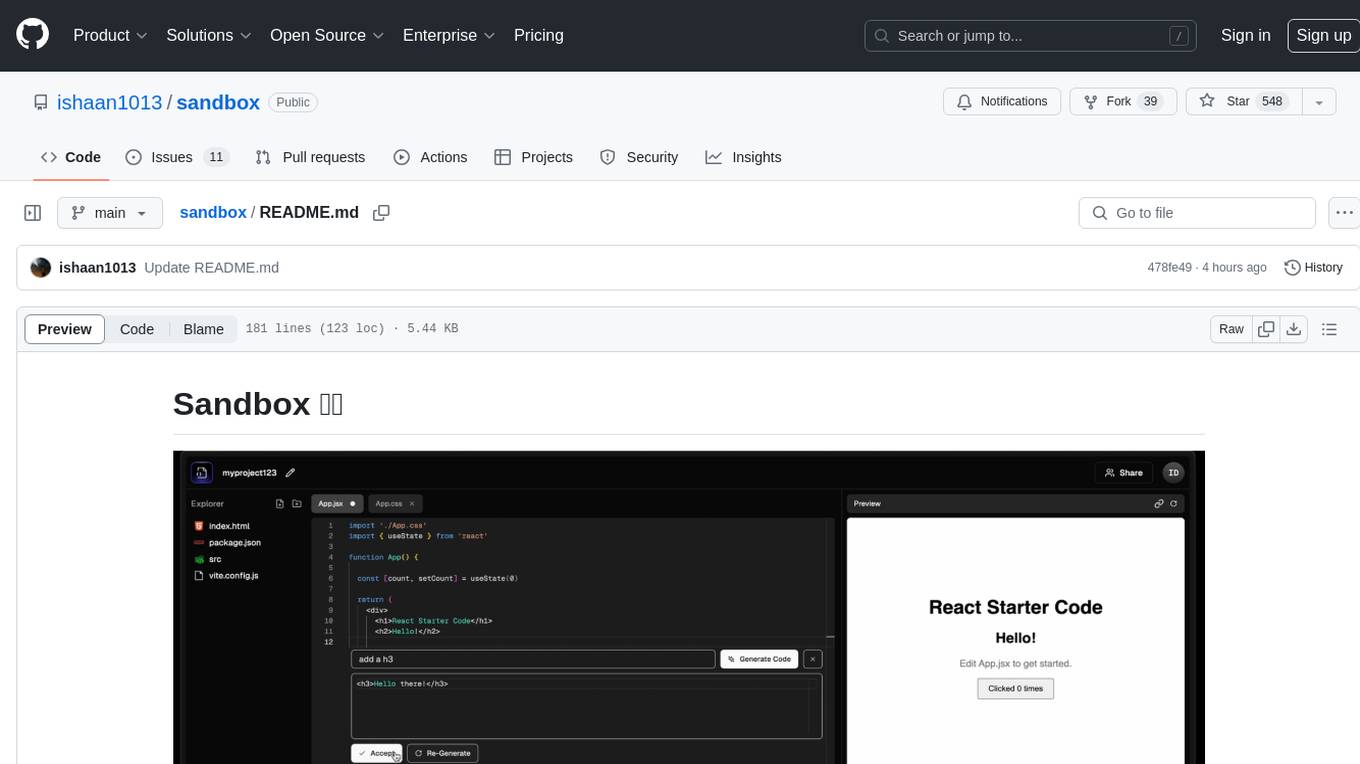
sandbox
Sandbox is an open-source cloud-based code editing environment with custom AI code autocompletion and real-time collaboration. It consists of a frontend built with Next.js, TailwindCSS, Shadcn UI, Clerk, Monaco, and Liveblocks, and a backend with Express, Socket.io, Cloudflare Workers, D1 database, R2 storage, Workers AI, and Drizzle ORM. The backend includes microservices for database, storage, and AI functionalities. Users can run the project locally by setting up environment variables and deploying the containers. Contributions are welcome following the commit convention and structure provided in the repository.
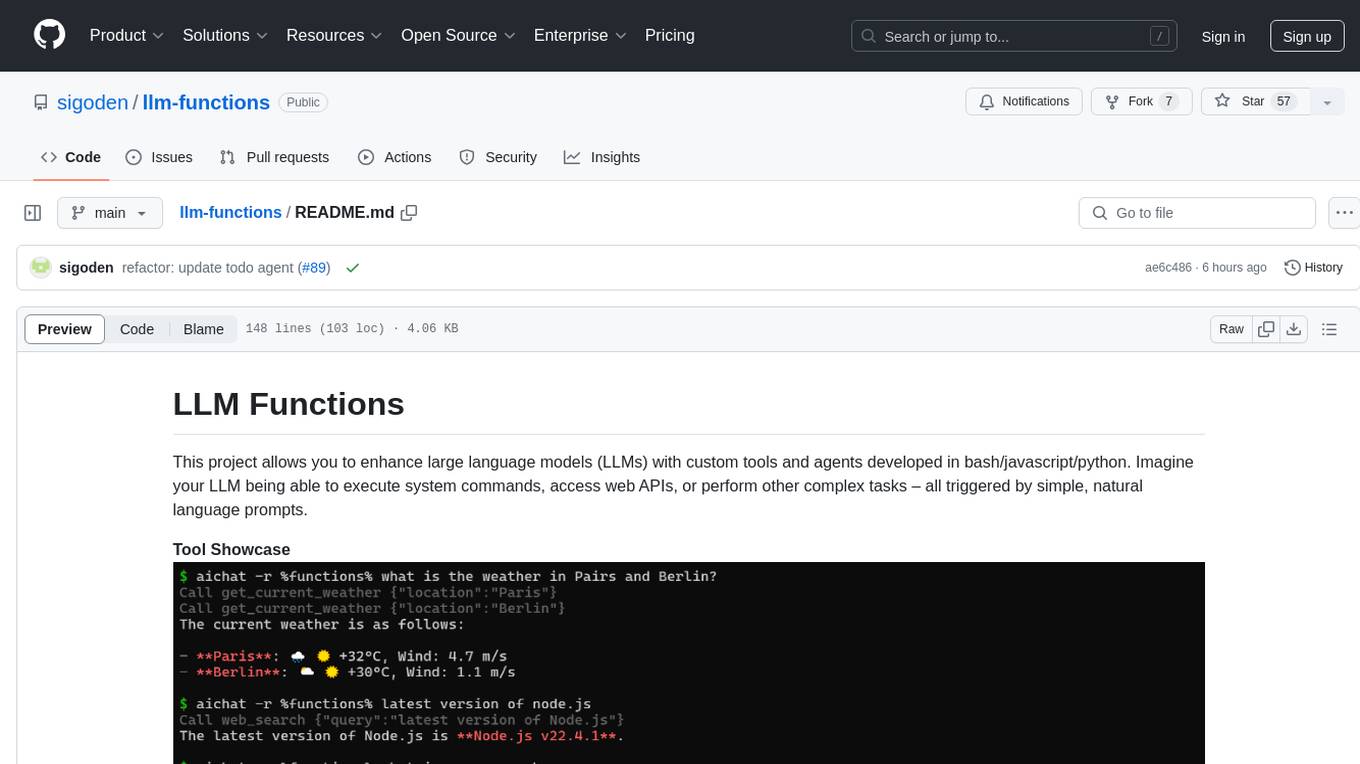
llm-functions
LLM Functions is a project that enables the enhancement of large language models (LLMs) with custom tools and agents developed in bash, javascript, and python. Users can create tools for their LLM to execute system commands, access web APIs, or perform other complex tasks triggered by natural language prompts. The project provides a framework for building tools and agents, with tools being functions written in the user's preferred language and automatically generating JSON declarations based on comments. Agents combine prompts, function callings, and knowledge (RAG) to create conversational AI agents. The project is designed to be user-friendly and allows users to easily extend the capabilities of their language models.
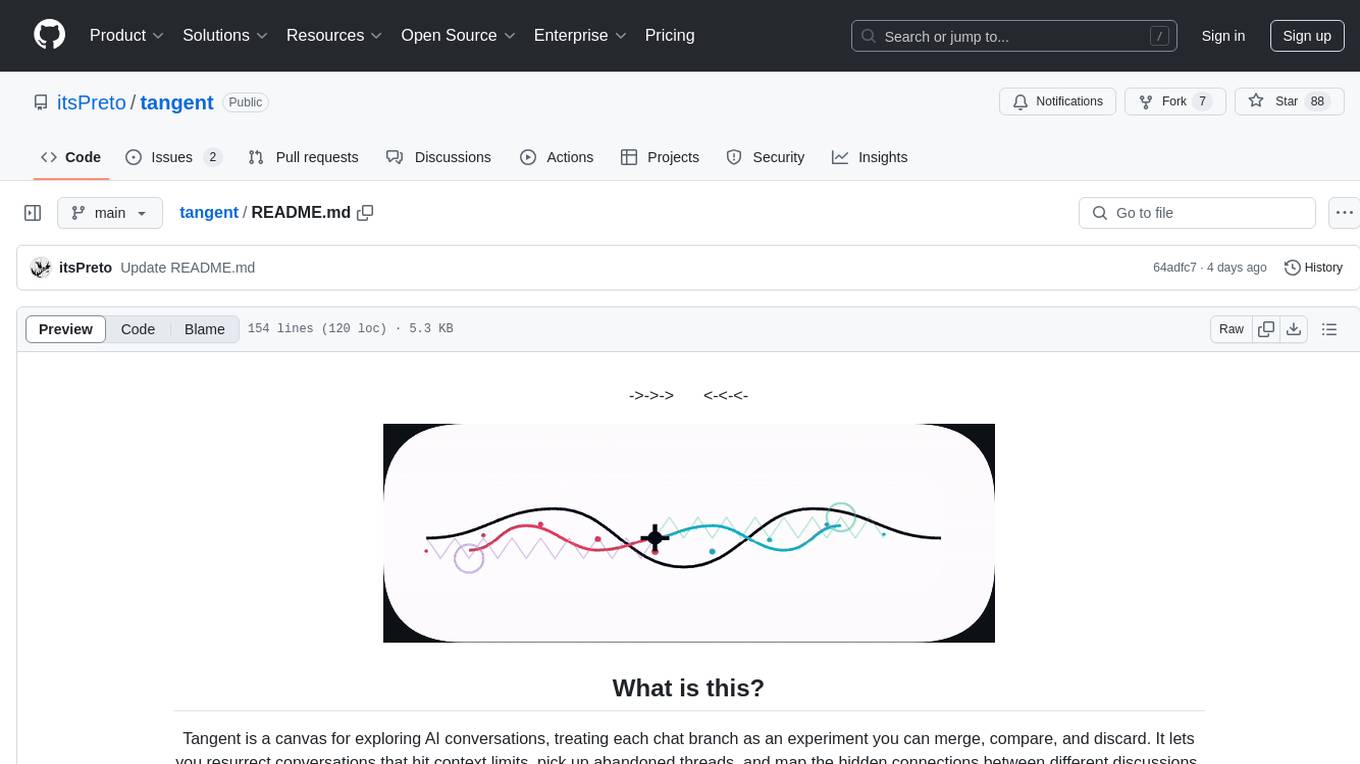
tangent
Tangent is a canvas for exploring AI conversations, allowing users to resurrect and continue conversations, branch and explore different ideas, organize conversations by topics, and support archive data exports. It aims to provide a visual/textual/audio exploration experience with AI assistants, offering a 'thoughts workbench' for experimenting freely, reviving old threads, and diving into tangents. The project structure includes a modular backend with components for API routes, background task management, data processing, and more. Prerequisites for setup include Whisper.cpp, Ollama, and exported archive data from Claude or ChatGPT. Users can initialize the environment, install Python packages, set up Ollama, configure local models, and start the backend and frontend to interact with the tool.
For similar tasks

ethereum-etl-airflow
This repository contains Airflow DAGs for extracting, transforming, and loading (ETL) data from the Ethereum blockchain into BigQuery. The DAGs use the Google Cloud Platform (GCP) services, including BigQuery, Cloud Storage, and Cloud Composer, to automate the ETL process. The repository also includes scripts for setting up the GCP environment and running the DAGs locally.
For similar jobs

ethereum-etl-airflow
This repository contains Airflow DAGs for extracting, transforming, and loading (ETL) data from the Ethereum blockchain into BigQuery. The DAGs use the Google Cloud Platform (GCP) services, including BigQuery, Cloud Storage, and Cloud Composer, to automate the ETL process. The repository also includes scripts for setting up the GCP environment and running the DAGs locally.
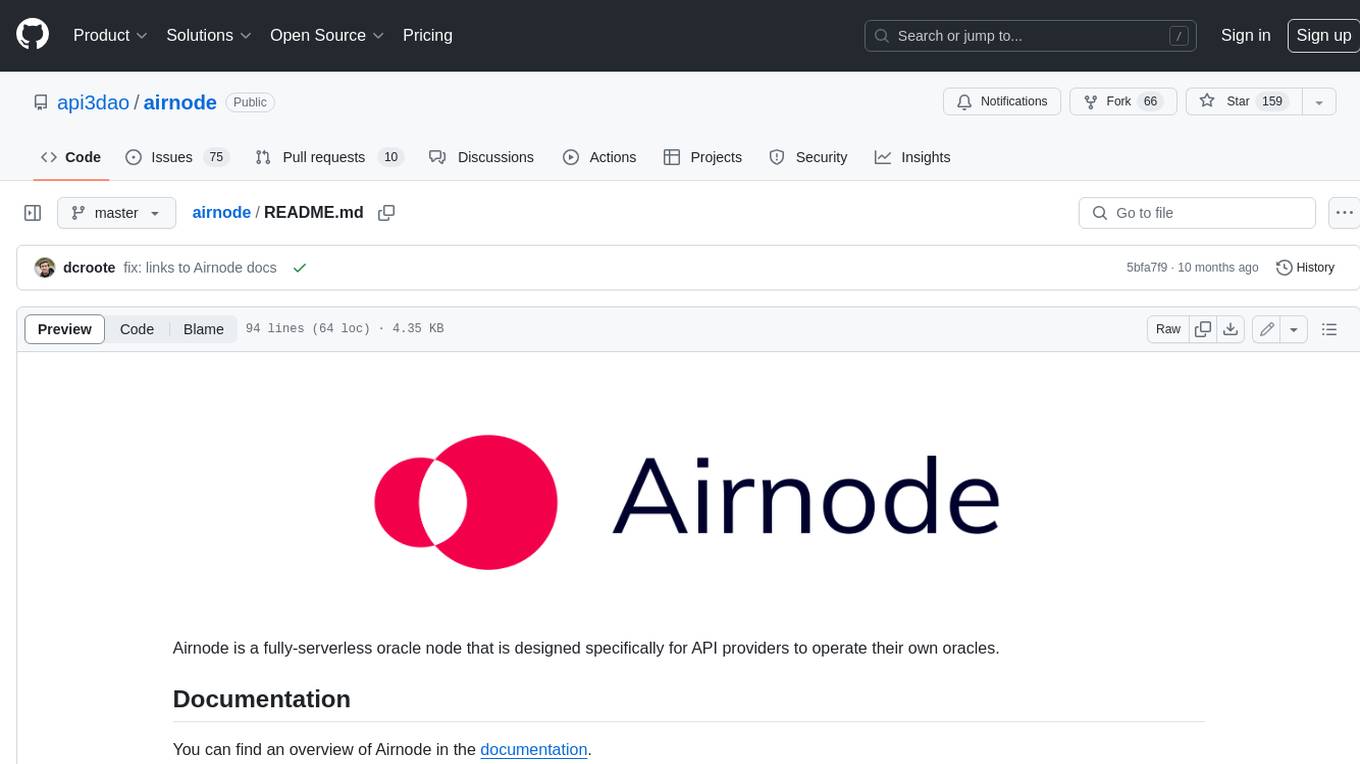
airnode
Airnode is a fully-serverless oracle node that is designed specifically for API providers to operate their own oracles.
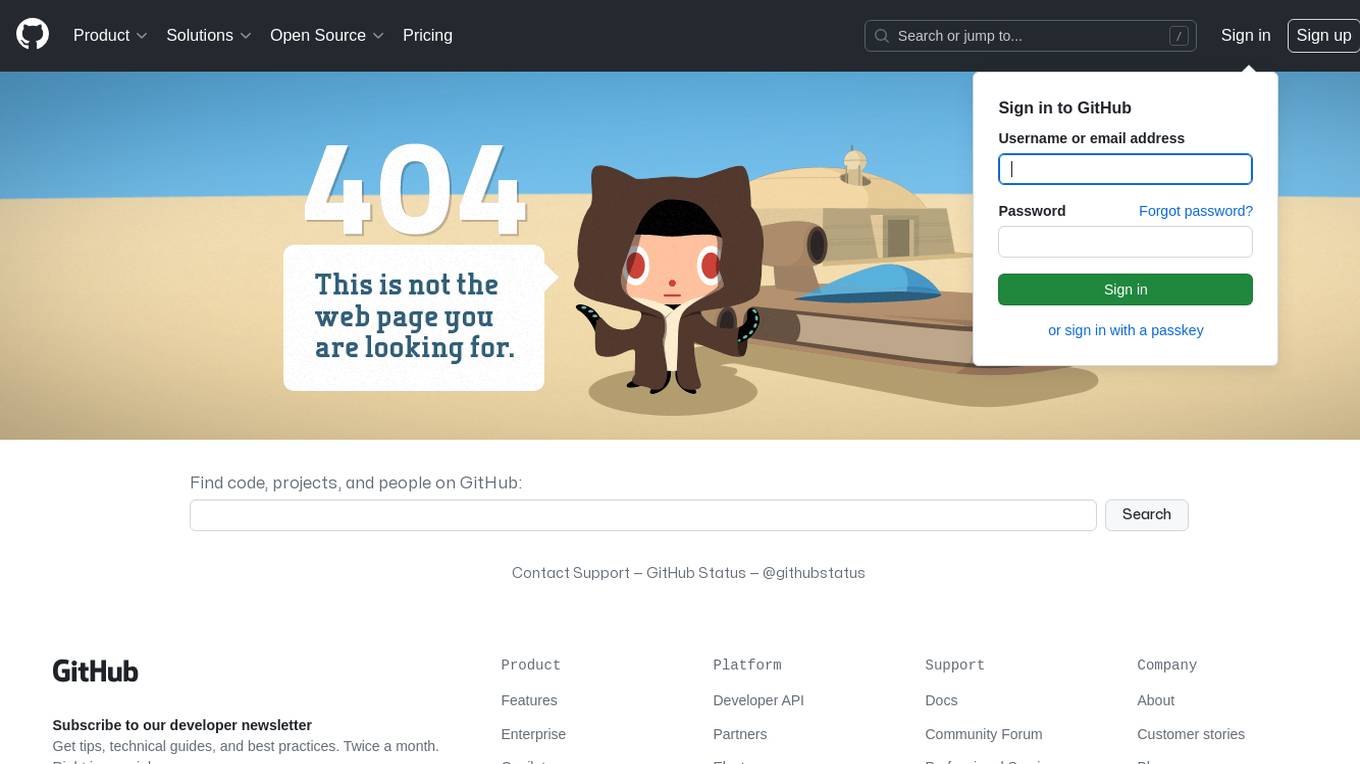
CHATPGT-MEV-BOT
The 𝓜𝓔𝓥-𝓑𝓞𝓣 is a revolutionary tool that empowers users to maximize their ETH earnings through advanced slippage techniques within the Ethereum ecosystem. Its user-centric design, optimized earning mechanism, and comprehensive security measures make it an indispensable tool for traders seeking to enhance their crypto trading strategies. With its current free access, there's no better time to explore the 𝓜𝓔𝓥-𝓑𝓞𝓣's capabilities and witness the transformative impact it can have on your crypto trading journey.
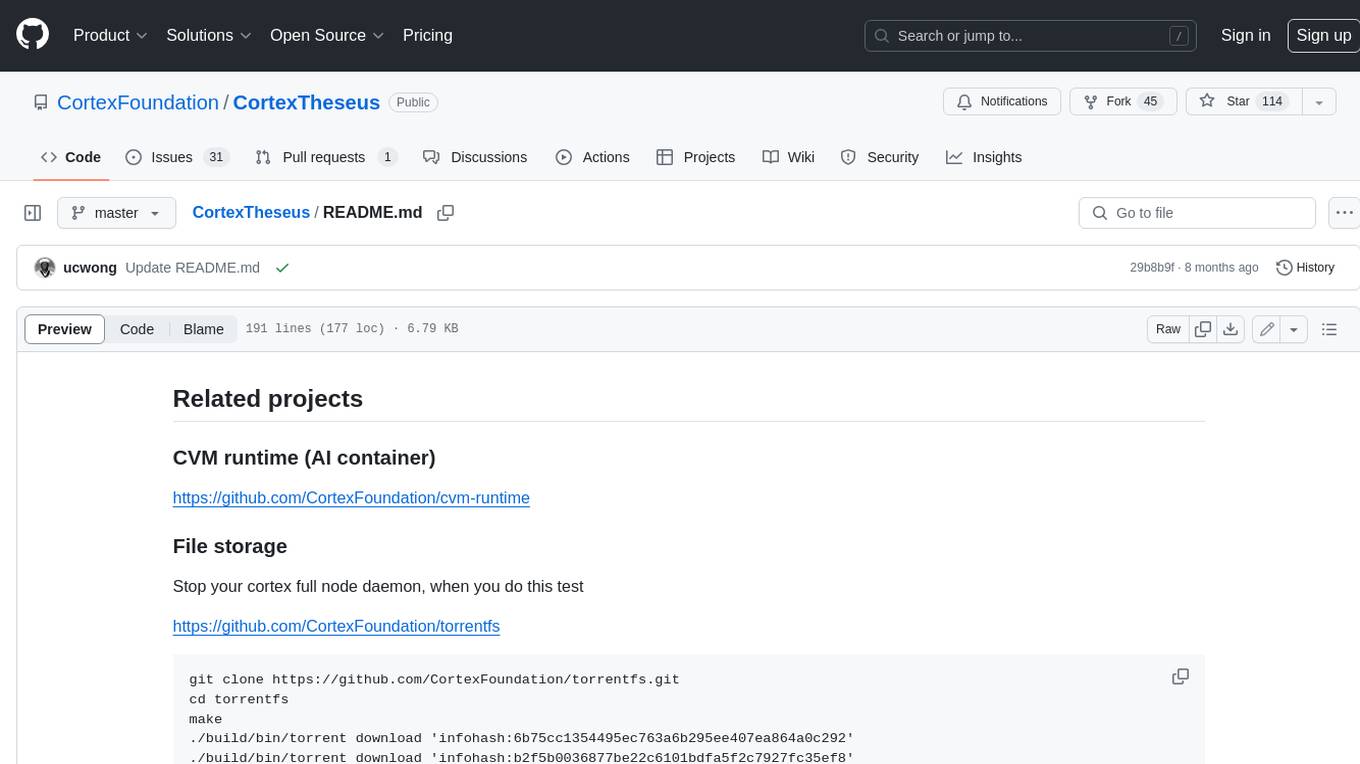
CortexTheseus
CortexTheseus is a full node implementation of the Cortex blockchain, written in C++. It provides a complete set of features for interacting with the Cortex network, including the ability to create and manage accounts, send and receive transactions, and participate in consensus. CortexTheseus is designed to be scalable, secure, and easy to use, making it an ideal choice for developers building applications on the Cortex blockchain.
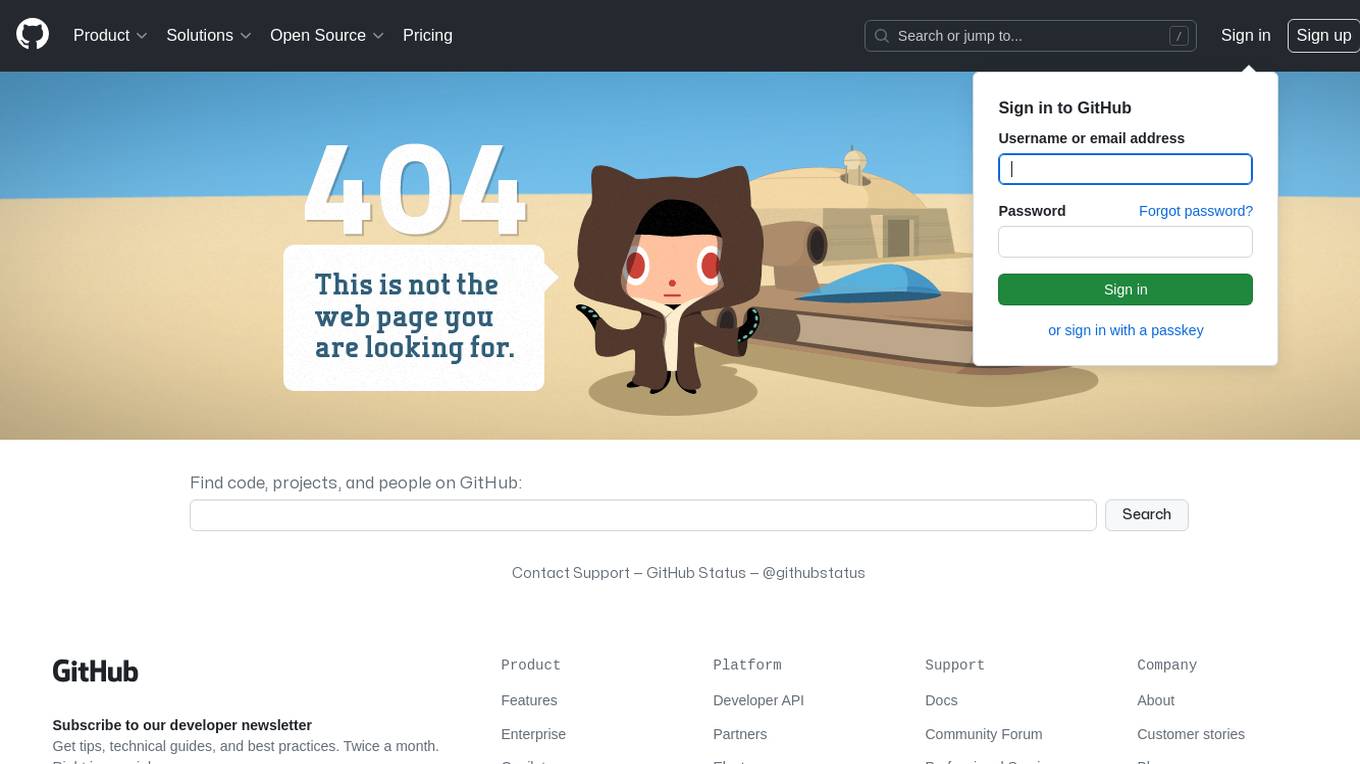
CHATPGT-MEV-BOT-ETH
This tool is a bot that monitors the performance of MEV transactions on the Ethereum blockchain. It provides real-time data on MEV profitability, transaction volume, and network congestion. The bot can be used to identify profitable MEV opportunities and to track the performance of MEV strategies.
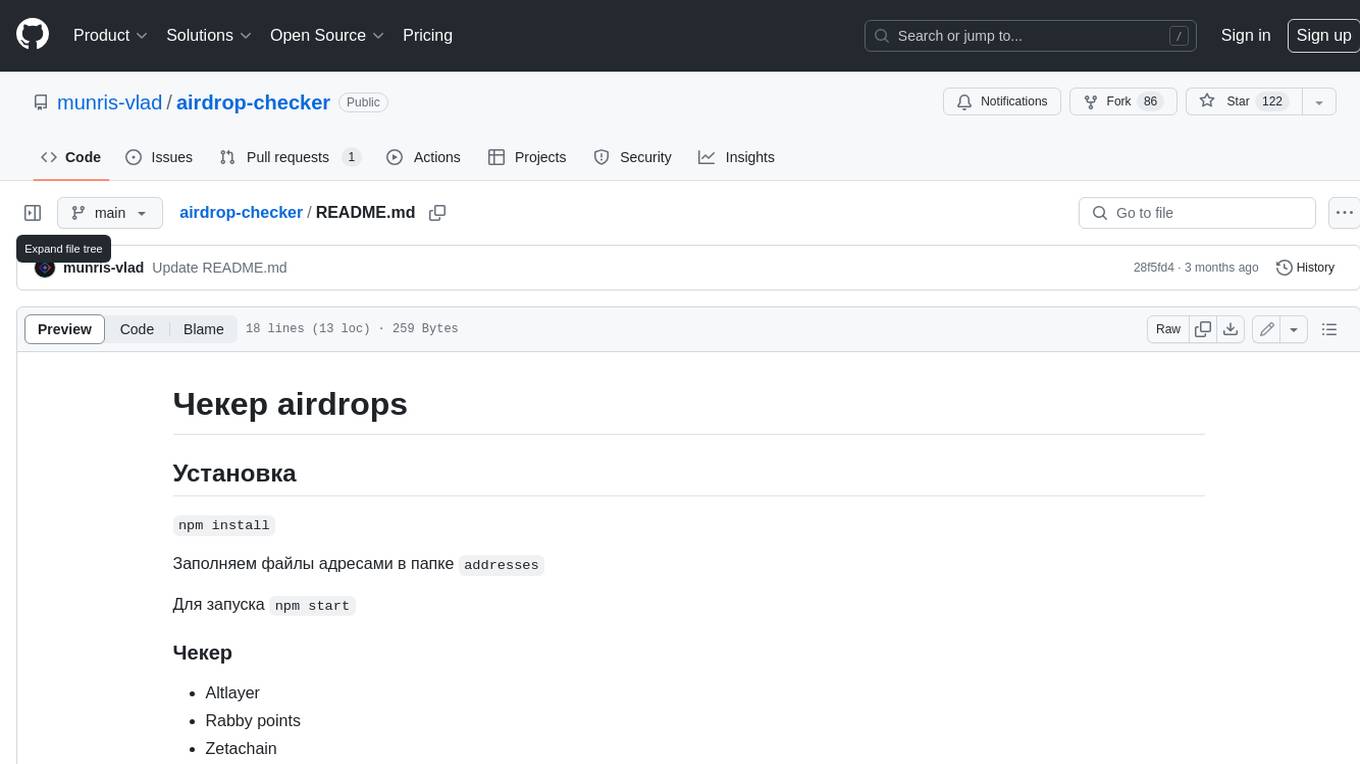
airdrop-checker
Airdrop-checker is a tool that helps you to check if you are eligible for any airdrops. It supports multiple airdrops, including Altlayer, Rabby points, Zetachain, Frame, Anoma, Dymension, and MEME. To use the tool, you need to install it using npm and then fill the addresses files in the addresses folder with your wallet addresses. Once you have done this, you can run the tool using npm start.
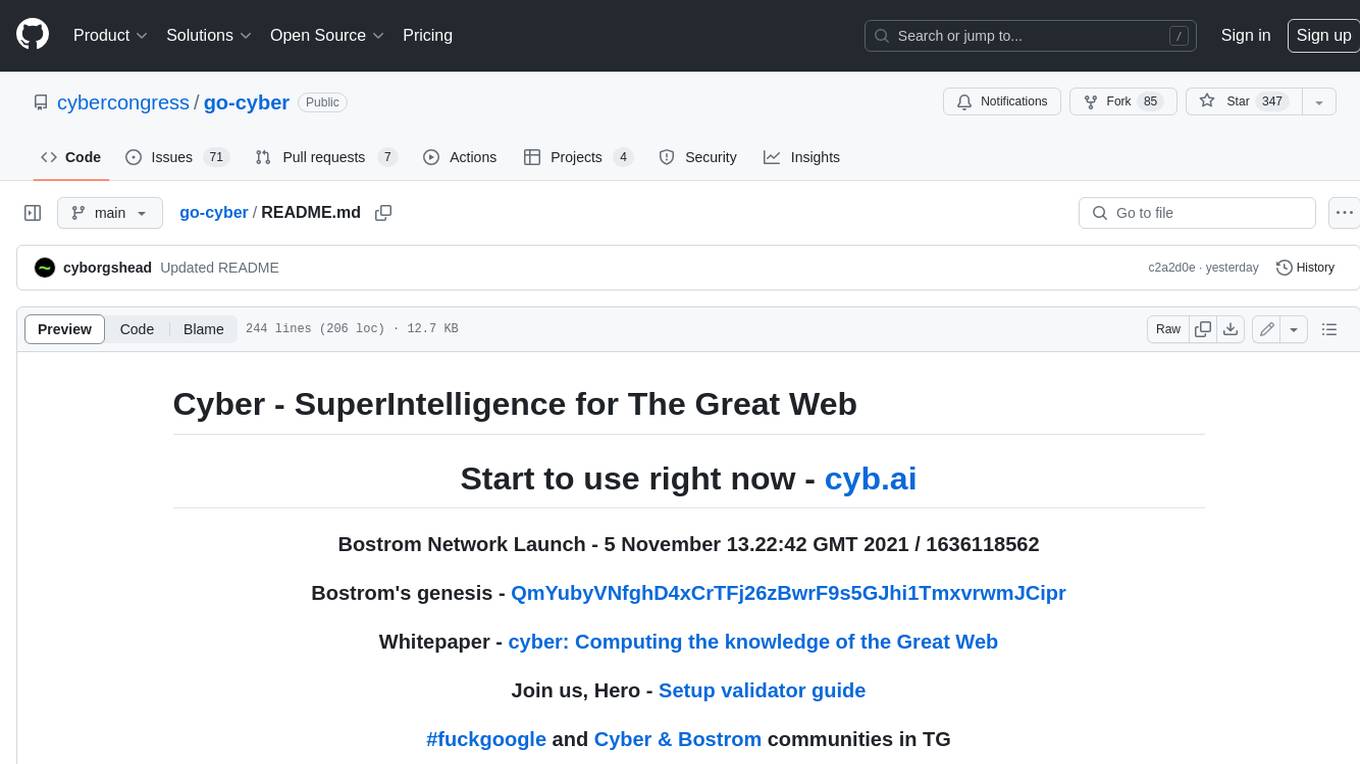
go-cyber
Cyber is a superintelligence protocol that aims to create a decentralized and censorship-resistant internet. It uses a novel consensus mechanism called CometBFT and a knowledge graph to store and process information. Cyber is designed to be scalable, secure, and efficient, and it has the potential to revolutionize the way we interact with the internet.
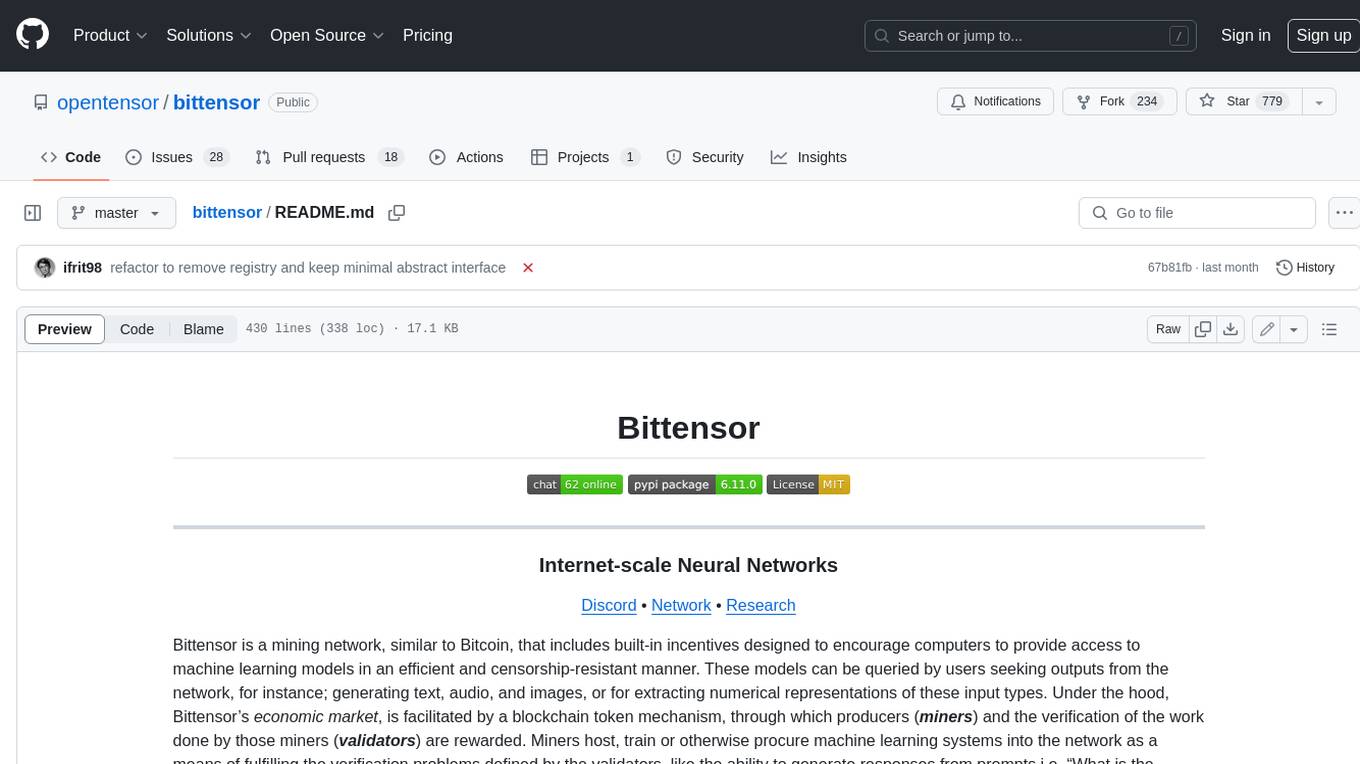
bittensor
Bittensor is an internet-scale neural network that incentivizes computers to provide access to machine learning models in a decentralized and censorship-resistant manner. It operates through a token-based mechanism where miners host, train, and procure machine learning systems to fulfill verification problems defined by validators. The network rewards miners and validators for their contributions, ensuring continuous improvement in knowledge output. Bittensor allows anyone to participate, extract value, and govern the network without centralized control. It supports tasks such as generating text, audio, images, and extracting numerical representations.
